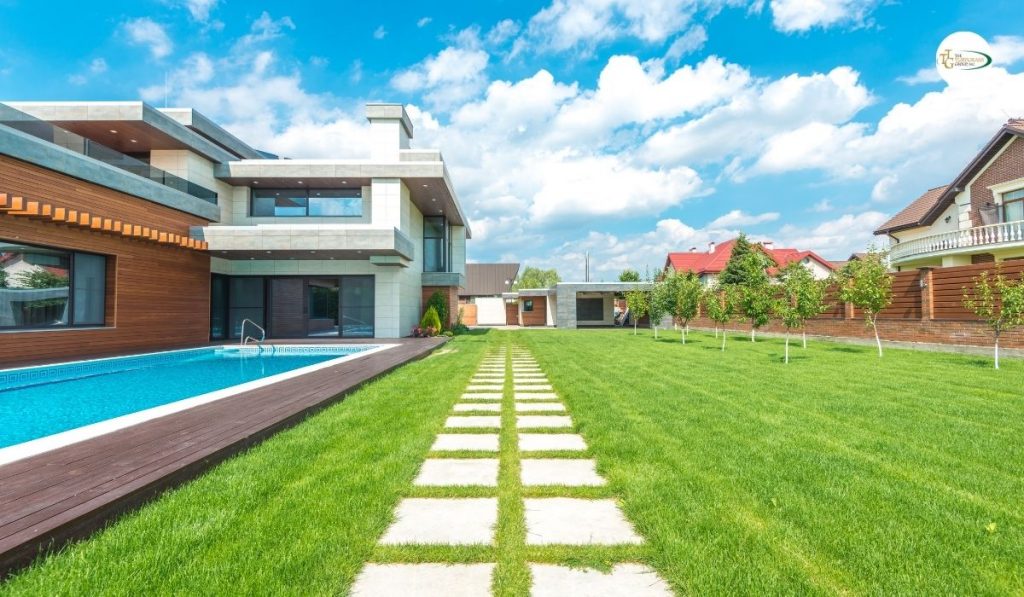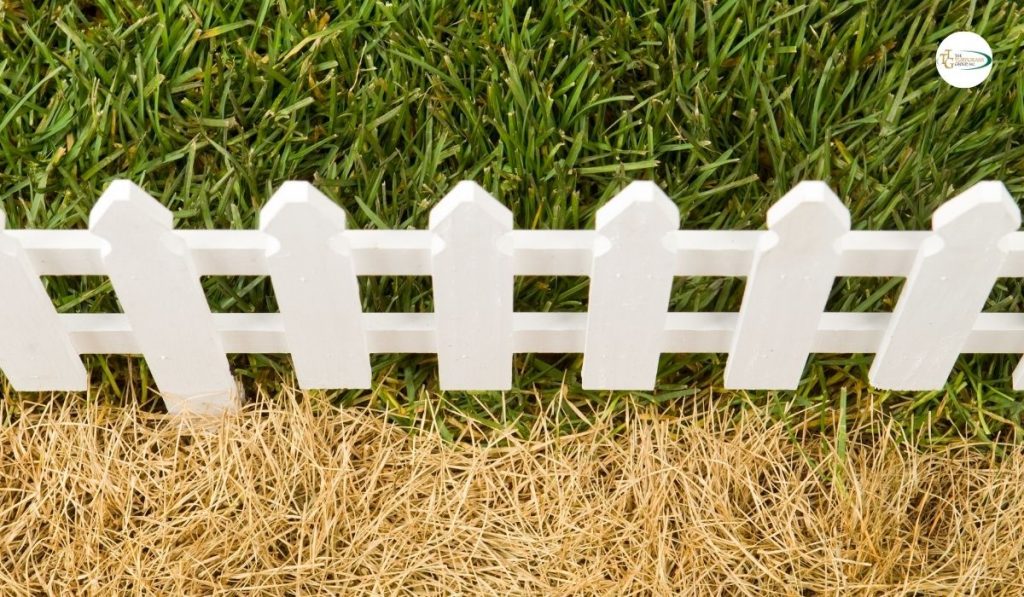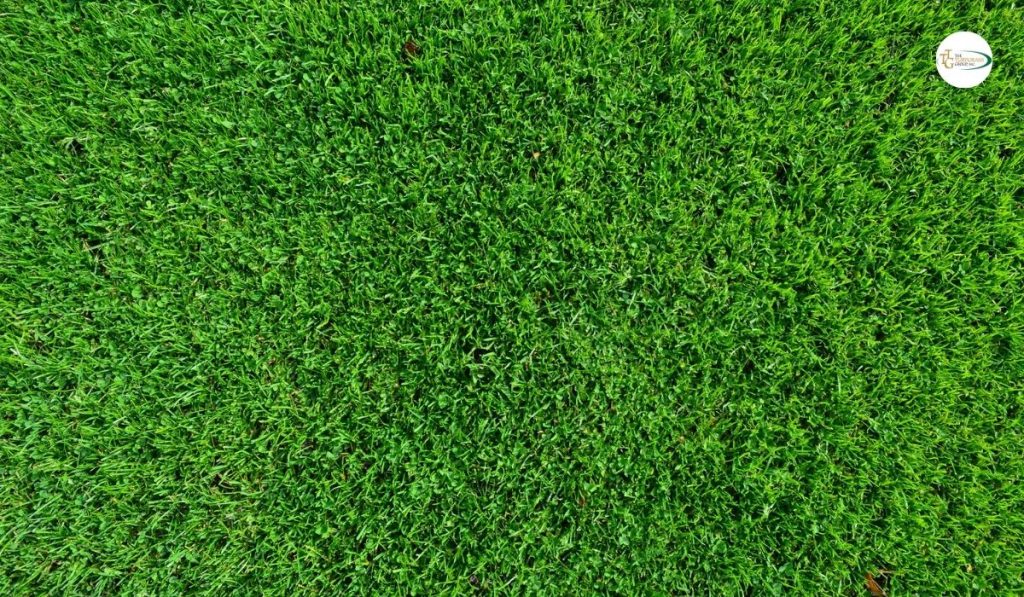
Selecting the correct type of grass for your lawn, such as Trinity Zoysia vs. Other Grasses, can significantly impact its overall appearance, maintenance requirements, and resilience against environmental factors.
With various options available, homeowners often find themselves contemplating which grass variety will best suit their needs.
Among these options, Trinity Zoysia stands out as a popular choice, renowned for its lush green appearance and durability.
However, comparing Trinity Zoysia with other grass types is essential to make an informed decision about the most suitable turf for your lawn.
Understanding Trinity Zoysia:
Trinity Zoysia, scientifically known as Zoysia japonica ‘SS-500’, is a warm-season grass variety celebrated for its dense growth, vibrant green color, and tolerance to heat and drought.
Originating from Japan, Trinity Zoysia has gained popularity in the United States due to its adaptability to a wide range of soil types and climates.
Its fine texture and low growth habit make it an excellent choice for both residential and commercial landscapes.
Advantages of Trinity Zoysia:
- Drought Tolerance: Trinity Zoysia exhibits remarkable drought tolerance, making it an ideal choice for regions with hot and dry climates.
- Low Maintenance: Compared to other warm-season grasses, Trinity Zoysia requires minimal maintenance, including mowing, fertilization, and irrigation.
- High Traffic Tolerance: Its dense growth pattern enables Trinity Zoysia to withstand heavy foot traffic, making it suitable for active outdoor areas and play spaces.
- Cold Hardy: While primarily a warm-season grass, Trinity Zoysia demonstrates good cold tolerance compared to other Zoysia varieties, allowing it to thrive in transitional climates.

Comparing Trinity Zoysia with Other Grasses:
Bermuda Grass (Cynodon dactylon):
- Appearance: Bermuda grass offers a fine texture similar to Trinity Zoysia but tends to be slightly lighter green in color.
- Maintenance: Bermuda grass requires frequent mowing and watering compared to Trinity Zoysia, making it higher maintenance.
- Tolerance: Bermuda grass is highly tolerant of heat and drought, similar to Trinity Zoysia, but may struggle in shaded areas.
St. Augustine Grass (Stenotaphrum secundatum):
- Appearance: St. Augustine grass has a coarser texture and broader blades compared to the finer texture of Trinity Zoysia.
- Maintenance: St. Augustine grass typically requires more water and fertilizer than Trinity Zoysia and may be more susceptible to pests and diseases.
- Tolerance: While both grasses thrive in warm climates, Trinity Zoysia exhibits better drought tolerance and can withstand higher temperatures.
Centipede Grass (Eremochloa ophiuroides):
- Appearance: Centipedegrass has a lighter green color and coarser texture compared to Trinity Zoysia.
- Maintenance: Centipede grass requires less frequent mowing than Trinity Zoysia but may struggle in acidic soils, unlike Trinity Zoysia, which tolerates a broader range of soil pH levels.
- Tolerance: Both grasses are relatively low-maintenance but Trinity Zoysia has superior heat and drought tolerance.
Zoysia Grass Varieties:
- Emerald Zoysia (Zoysia japonica ‘Emerald’): Emerald Zoysia is known for its striking emerald green color and fine texture, making it a popular choice for golf courses and upscale landscapes. While it shares some characteristics with Trinity Zoysia, such as drought tolerance and low maintenance, Emerald Zoysia may require more frequent mowing due to its faster growth rate.
- Meyer Zoysia (Zoysia japonica ‘Meyer’): Meyer Zoysia is another variant of Zoysia grass with a medium texture and dark green color. It offers excellent drought tolerance and can thrive in both full sun and partial shade. However, compared to Trinity Zoysia, Meyer Zoysia may be more susceptible to thatch buildup and requires periodic dethatching to maintain optimal health.
Environmental Impact:
- When considering which grass variety to plant, it’s essential to assess the environmental impact of each option.
Trinity Zoysia is recognized for its eco-friendly attributes, including reduced water consumption and minimal fertilizer requirements.
By choosing Trinity Zoysia or other low-maintenance grasses, homeowners can contribute to water conservation efforts and minimize chemical runoff into the environment.
- Additionally, Trinity Zoysia and similar grasses’ dense growth habit can help prevent soil erosion, improve air quality, and provide habitat for beneficial insects and wildlife.
These ecological benefits further underscore the value of selecting turfgrass varieties that promote environmental sustainability.
Cost Considerations:
- While Trinity Zoysia and other premium grass varieties offer numerous advantages, it’s essential to factor in the initial cost of installation and ongoing maintenance expenses.
Trinity Zoysia typically commands a higher price tag compared to more common grass types like Bermuda or Centipede.
However, the long-term savings associated with reduced water usage, fertilizer requirements, and maintenance efforts may offset the initial investment over time.
- Homeowners should also consider the availability of local suppliers and installation professionals when evaluating the overall cost of transitioning to Trinity Zoysia or other specialized turf varieties.
Requesting quotes from multiple vendors and exploring financing options can make the transition to premium grass more financially feasible.
Personal Preferences:

- Ultimately, the decision to choose Trinity Zoysia or another grass variety hinges on personal preferences and lifestyle factors.
Some homeowners prioritize a lush, manicured lawn that requires minimal upkeep, while others may prefer a more rustic or informal landscape aesthetic.
Considering how the lawn will be used, the desired level of maintenance, and aesthetic preferences can guide homeowners toward the most suitable grass variety for their specific needs.
- Additionally, factors such as pet and child safety, allergy considerations, and compatibility with existing landscaping features should also be taken into account when selecting turfgrass for residential or commercial properties.
Conclusion
When choosing the right grass for your lawn, it’s essential to consider factors such as climate, soil type, maintenance requirements, and aesthetic preferences.
While Trinity Zoysia offers numerous benefits, including low maintenance, drought tolerance, and resilience, other grass varieties like Bermuda, St. Augustine, and Centipede may also be suitable depending on specific needs and preferences.
Consulting with a landscaping professional can provide valuable insights and guidance in selecting the ideal turf for your lawn, ensuring a lush and vibrant outdoor space for years to come.
To learn more about Trinity Zoysia and other premium turfgrass options, contact us at The Turfgrass Group for expert advice and assistance with your lawn care needs.
FAQs
What is Trinity Zoysia?
- Trinity Zoysia, scientifically known as Zoysia japonica ‘SS-500’, is a warm-season grass celebrated for its dense growth, vibrant green color, and heat and drought tolerance. It’s an excellent choice for both residential and commercial landscapes due to its delicate texture and low maintenance requirements.
What are the advantages of Trinity Zoysia?
- Trinity Zoysia offers several advantages:
- Drought Tolerance: Ideal for hot and dry climates.
- Low Maintenance: Requires minimal mowing, fertilization, and irrigation.
- High Traffic Tolerance: Withstands heavy foot traffic.
- Cold Hardy: Exhibits good cold tolerance, suitable for transitional climates.
How does Trinity Zoysia compare with Bermuda Grass?
- Appearance: Bermuda grass has a fine texture but a lighter green color compared to Trinity Zoysia.
- Maintenance: Bermuda grass needs more frequent mowing and watering.
- Tolerance: Both are heat and drought-tolerant, but Bermuda grass may struggle in shaded areas.
Compare Trinity Zoysia with St. Augustine Grass: How do they differ?
- Appearance: St. Augustine grass has a coarser texture and broader blades.
- Maintenance: Requires more water and fertilizer and may be more susceptible to pests and diseases.
- Tolerance: Trinity Zoysia exhibits better drought tolerance and withstands higher temperatures.
How does Trinity Zoysia compare with Centipede Grass?
- Appearance: Centipedegrass has a lighter green color and coarser texture.
- Maintenance: Requires less frequent mowing but may struggle in acidic soils.
- Tolerance: Trinity Zoysia has superior heat and drought tolerance.
What are the characteristics of Emerald and Meyer Zoysia grass varieties?
Emerald Zoysia offers a striking emerald green color and fine texture, while Meyer Zoysia has a medium texture and dark green color. Both share traits like drought tolerance and low maintenance but may require different mowing frequencies.
What is the environmental impact of Trinity Zoysia?
Trinity Zoysia promotes eco-friendliness through reduced water consumption and minimal fertilizer requirements. Its dense growth prevents soil erosion, improves air quality, and provides a habitat for beneficial insects and wildlife.
What cost considerations should homeowners keep in mind when choosing Trinity Zoysia?
While Trinity Zoysia may have a higher initial cost, long-term savings from reduced water usage and maintenance efforts can offset this. Homeowners should also consider local supplier availability and financing options.
How should personal preferences influence the choice between Trinity Zoysia and other grass varieties?
Personal preferences, lifestyle factors, and practical considerations like pet safety and landscaping compatibility should guide the choice of grass variety.
What other factors should be considered when selecting turfgrass for a property?
Homeowners should consider factors such as pet and child safety, allergy considerations, and compatibility with existing landscaping features.
How does Trinity Zoysia compare with cool-season grasses like Kentucky Bluegrass or Fescue?
Trinity Zoysia is a warm-season grass, while Kentucky Bluegrass and Fescue are cool-season varieties. Warm-season grasses like Trinity Zoysia thrive in hot summers but may go dormant in cooler temperatures, whereas cool-season grasses perform better in colder climates.
Can Trinity Zoysia be grown from seed, or is it only available as sod or plugs?
Trinity Zoysia is primarily propagated through sod or plugs due to its slow growth from seed. Sodding or plugging is the recommended method for establishing a lawn with Trinity Zoysia for quicker and more reliable results.
Is Trinity Zoysia suitable for shady areas of the lawn?
While Trinity Zoysia prefers full sun, it can tolerate some shade, especially compared to other warm-season grasses. However, for optimal performance, it’s best to plant Trinity Zoysia in areas with at least partial sunlight.
How does the cost of maintaining Trinity Zoysia compare to other grass varieties over time?
While the initial cost of installing Trinity Zoysia may be higher, its lower maintenance requirements, including reduced mowing, watering, and fertilizing, can lead to long-term cost savings compared to other grass types.